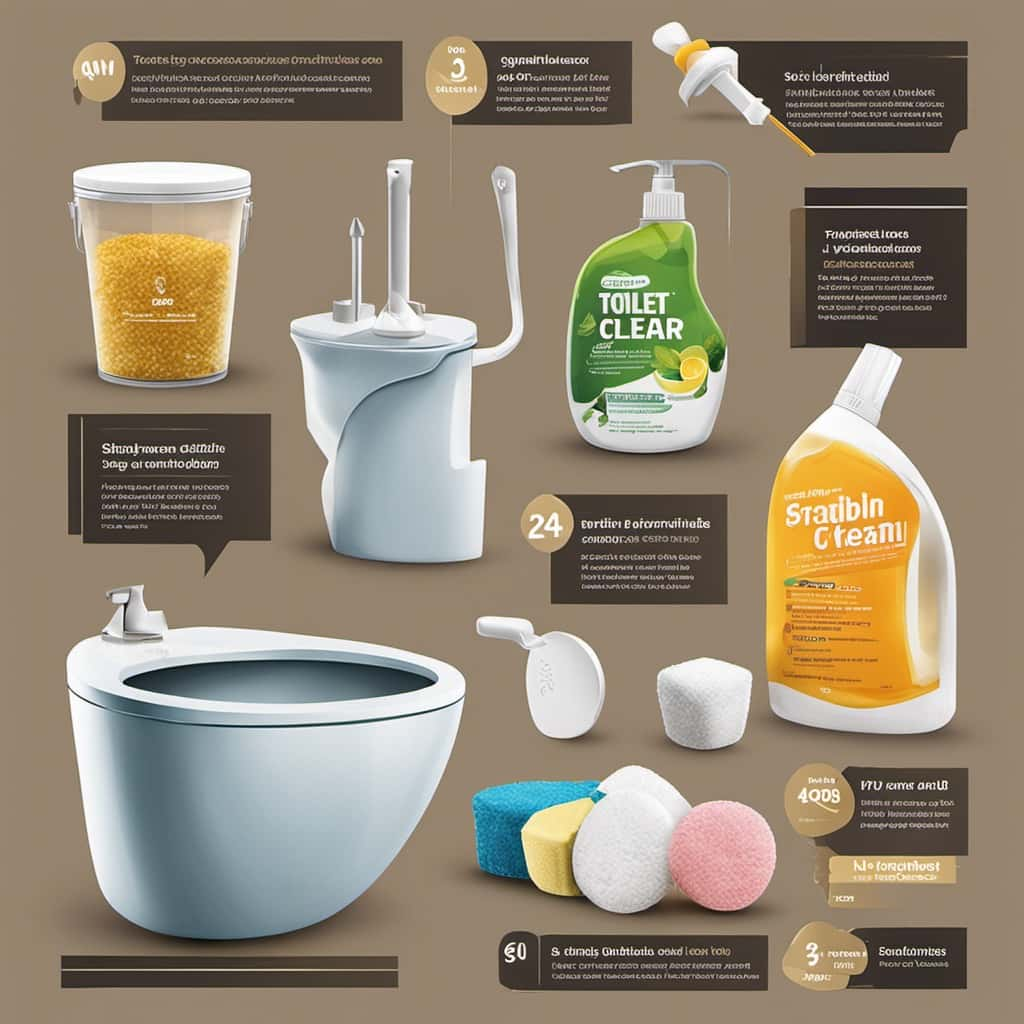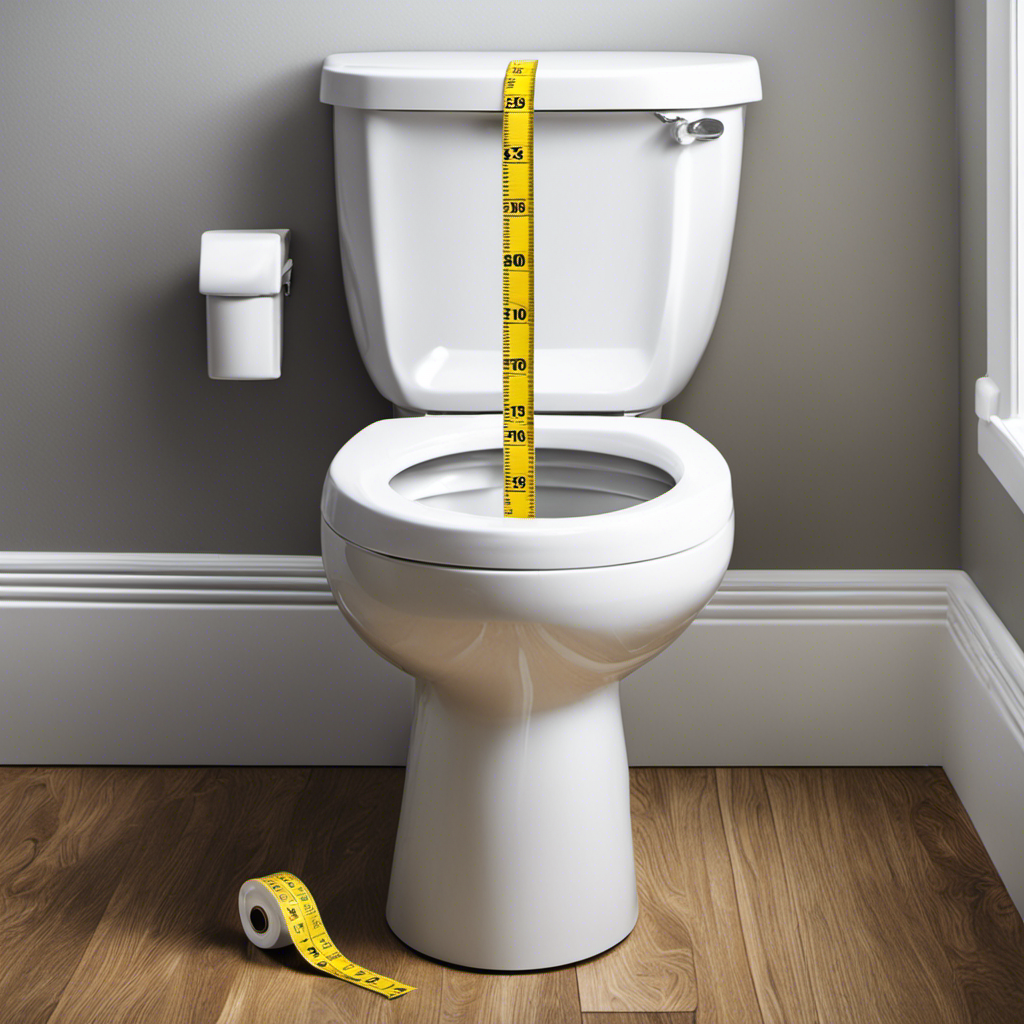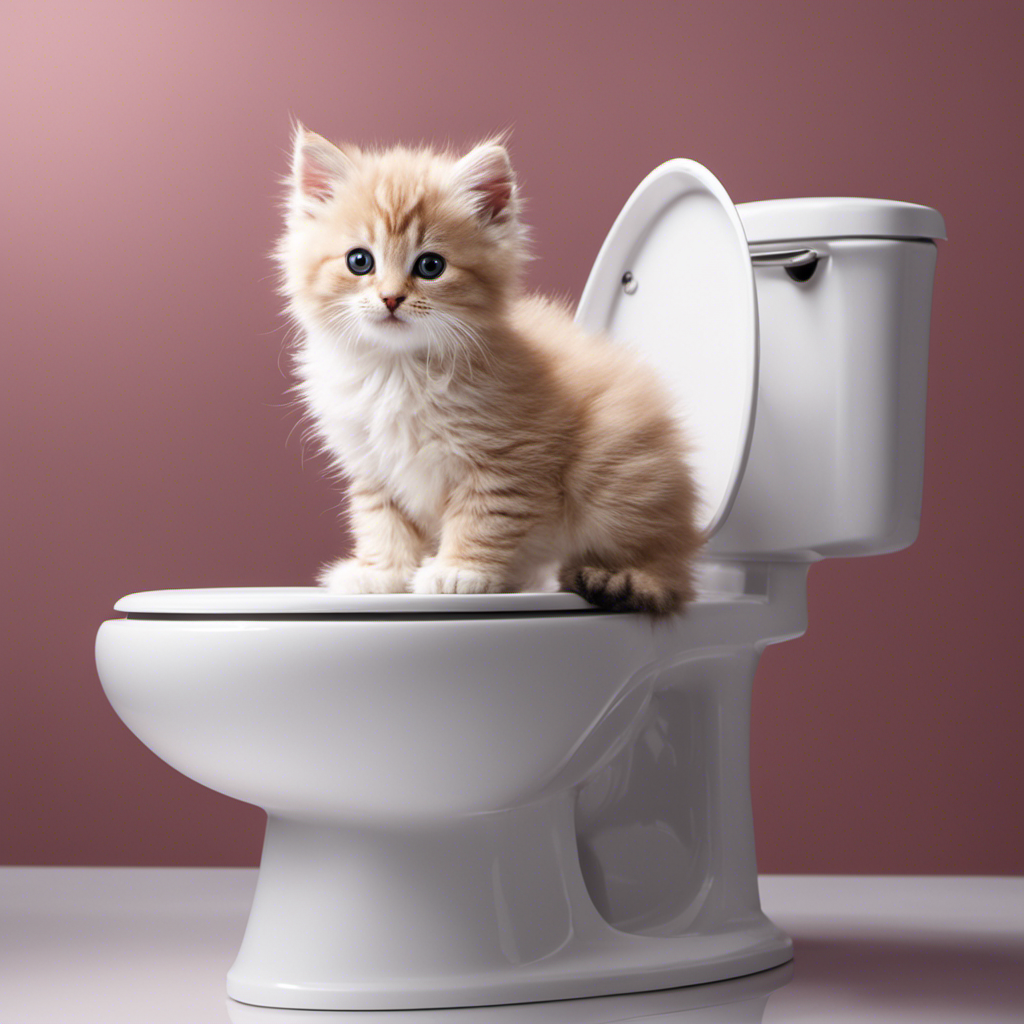Have you ever wondered what we can use to clean our toilet drain? Well, look no further! In this article, we will explore various methods to tackle this pesky problem.
Like a skilled plumber, we will guide you through the steps, providing you with technical, informative, and precise advice.
From using vinegar and baking soda to enlisting the help of a toilet auger or enzyme-based drain cleaner, we’ve got you covered.
Get ready to master the art of keeping your toilet drain squeaky clean!
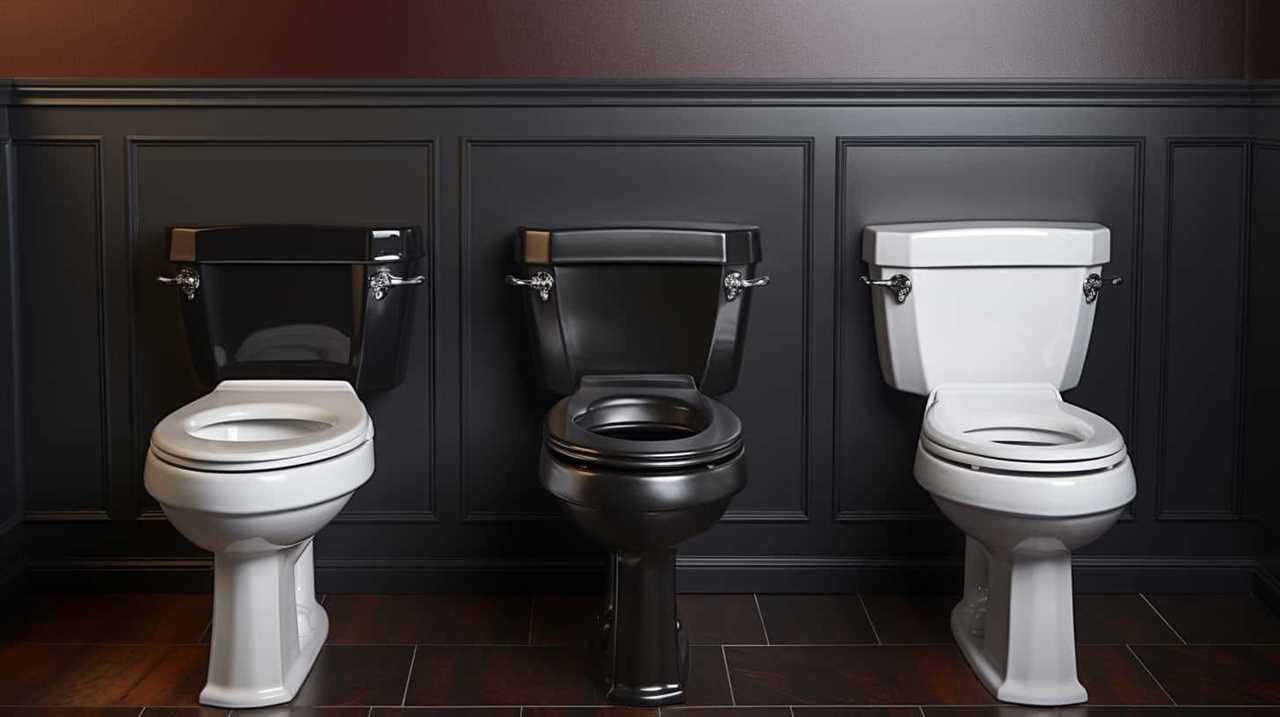
Key Takeaways
- Vinegar and baking soda create a fizzing reaction that helps remove clogs and leave a fresh scent.
- A plunger is an effective tool for unclogging toilets, creating suction to dislodge the clog.
- A toilet auger is a specialized tool designed to clear clogs in the toilet drain.
- Enzyme-based drain cleaners are environmentally-friendly and effective in breaking down organic matter, preventing future clogs, and removing foul odors.
Vinegar and Baking Soda
We love using vinegar and baking soda to clean our toilet drain because it effectively removes clogs and leaves a fresh scent.
Toilet drain maintenance is essential to prevent clogs and keep the plumbing system running smoothly.
Vinegar, a natural cleaning agent, is known for its acidic properties that break down organic matter and dissolve mineral deposits.
Baking soda, on the other hand, is a powerful deodorizer and abrasive cleaner that helps to dislodge stubborn clogs.
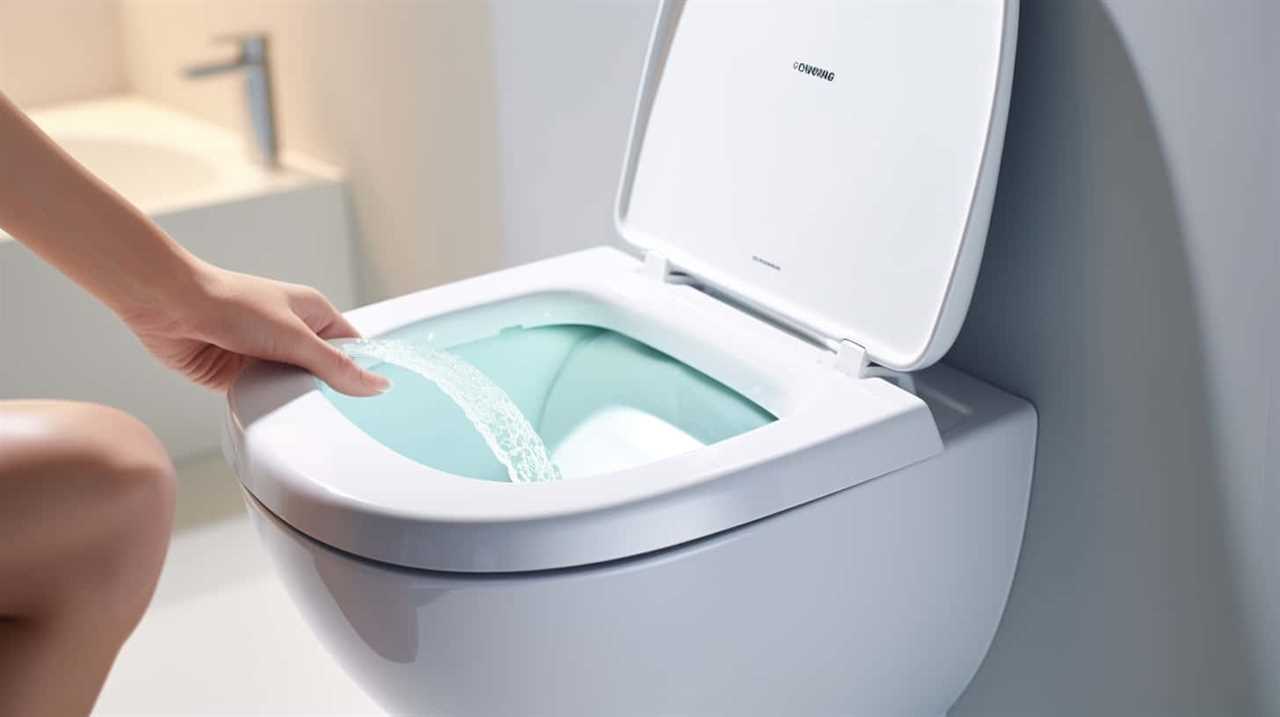
When combined, vinegar and baking soda create a fizzing reaction that helps to loosen and remove debris from the drain pipes.
To maintain a clog-free toilet drain, we recommend pouring a mixture of vinegar and baking soda down the drain once a month, followed by hot water to flush away any residue.
This simple yet effective method isn’t only economical but also environmentally friendly.
Plunger
Using a plunger is another effective tool for clearing clogs in our toilet drain. When faced with a stubborn toilet clog, we can rely on the power of the plunger to unclog the toilet and restore proper drainage. Here are three key points to keep in mind when using a plunger to tackle a toilet clog:

- Choose the right plunger: Opt for a toilet plunger specifically designed for unclogging toilets. This type of plunger features a flange or an extended rubber cup that creates a tighter seal around the drain.
- Create a seal: Place the plunger over the drain and ensure a proper seal by pressing down firmly. This seal is crucial for generating the necessary suction to dislodge the clog.
- Use a vigorous motion: With the plunger in place, push and pull forcefully to create a strong suction effect. Repeat this motion several times to dislodge the clog and allow water to flow freely down the drain.
Toilet Auger
When faced with a stubborn toilet clog, one effective tool to consider is the toilet auger. A toilet auger, also known as a closet auger or a water closet auger, is a specialized tool designed to clear clogs in the toilet drain. It consists of a long, flexible cable with a coiled end and a handle at the other end. To use a toilet auger effectively, follow these steps:
- Insert the coiled end of the auger into the toilet bowl, making sure it goes past the trap.
- Rotate the handle clockwise to extend the cable into the drain.
- Once you feel resistance, continue rotating and pushing to break up the clog.
- Slowly retract the cable while continuing to rotate to retrieve any debris.
- Flush the toilet to ensure the clog is cleared.
If you encounter any issues or the clog persists, here are some toilet auger troubleshooting tips:
| Problem | Solution |
|---|---|
| Auger gets stuck | Rotate the handle counterclockwise |
| Cable doesn’t reach clog | Extend the cable further before rotating |
| Debris gets tangled in auger | Clean the debris off the cable before retracting |
Remember to always exercise caution when using a toilet auger and follow the manufacturer’s instructions for proper usage.
Enzyme-based Drain Cleaner
An effective option for cleaning my toilet drain is an enzyme-based drain cleaner. Here are three reasons why enzyme-based drain cleaners are a superior choice over traditional chemical cleaners:
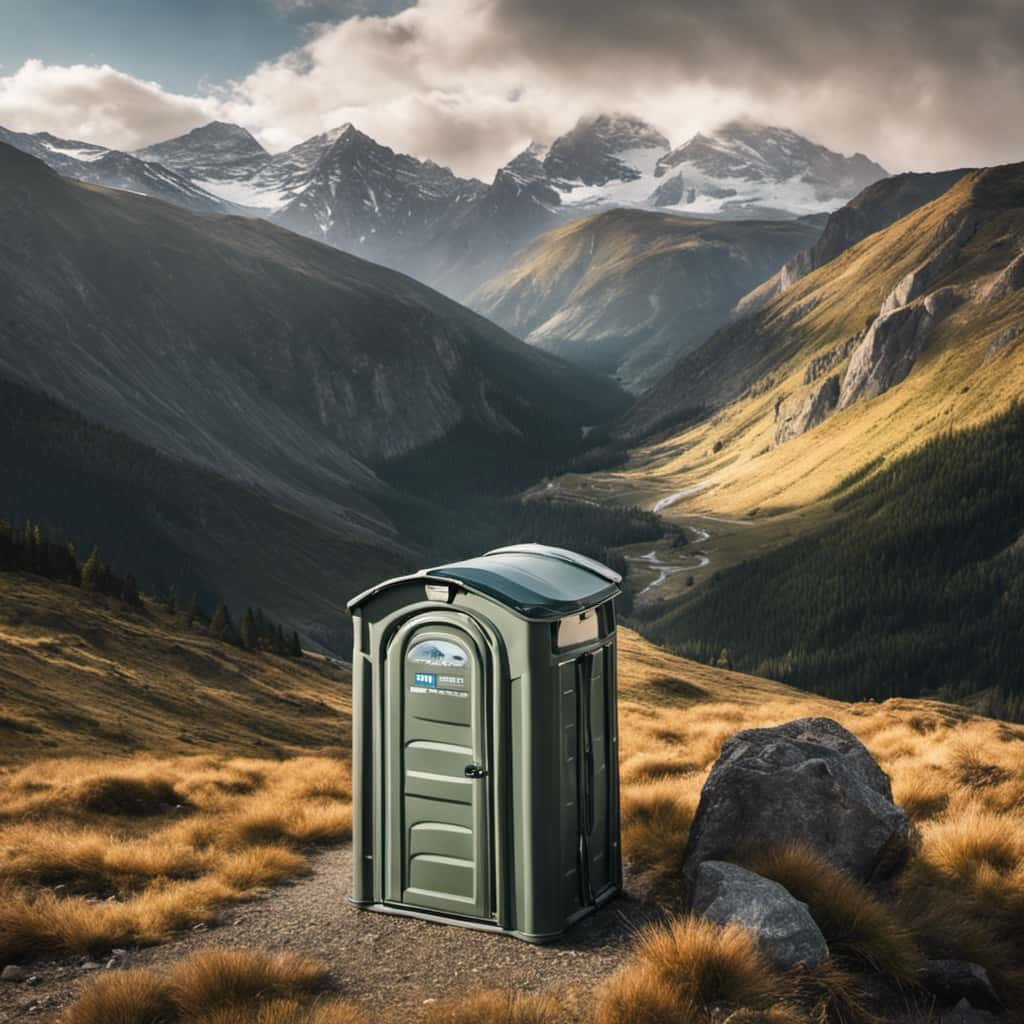
- Benefits of using enzyme-based drain cleaner over traditional chemical cleaners:
- Enzyme-based cleaners are environmentally friendly, as they’re made from natural and biodegradable ingredients.
- They’re safe to use and pose no harm to humans or pets.
- Enzymes break down organic matter, such as hair, grease, and soap scum, effectively unclogging the drain without damaging pipes.
- How enzyme-based drain cleaner can effectively remove stubborn clogs in toilet drains:
- Enzymes work by breaking down the complex molecules that form clogs, allowing them to be easily flushed away.
- Enzyme-based cleaners penetrate deep into the drain, ensuring thorough cleaning and preventing future clogs.
- They’re effective in removing foul odors caused by trapped debris in the drain.
Enzyme-based drain cleaners provide a safe and eco-friendly solution for unclogging and cleaning toilet drains. Now, let’s move on to the next section about using hot water and dish soap.
Hot Water and Dish Soap
To continue our discussion on cleaning toilet drains, let’s explore the effectiveness of using hot water and dish soap as a simple yet powerful solution.
When it comes to toilet unclogging tips and DIY drain cleaning methods, hot water and dish soap can be a winning combination.
Firstly, heat plays a crucial role in melting away grease and residue that may be causing the clog. By pouring hot water down the drain, you can effectively break down and flush away the obstruction.
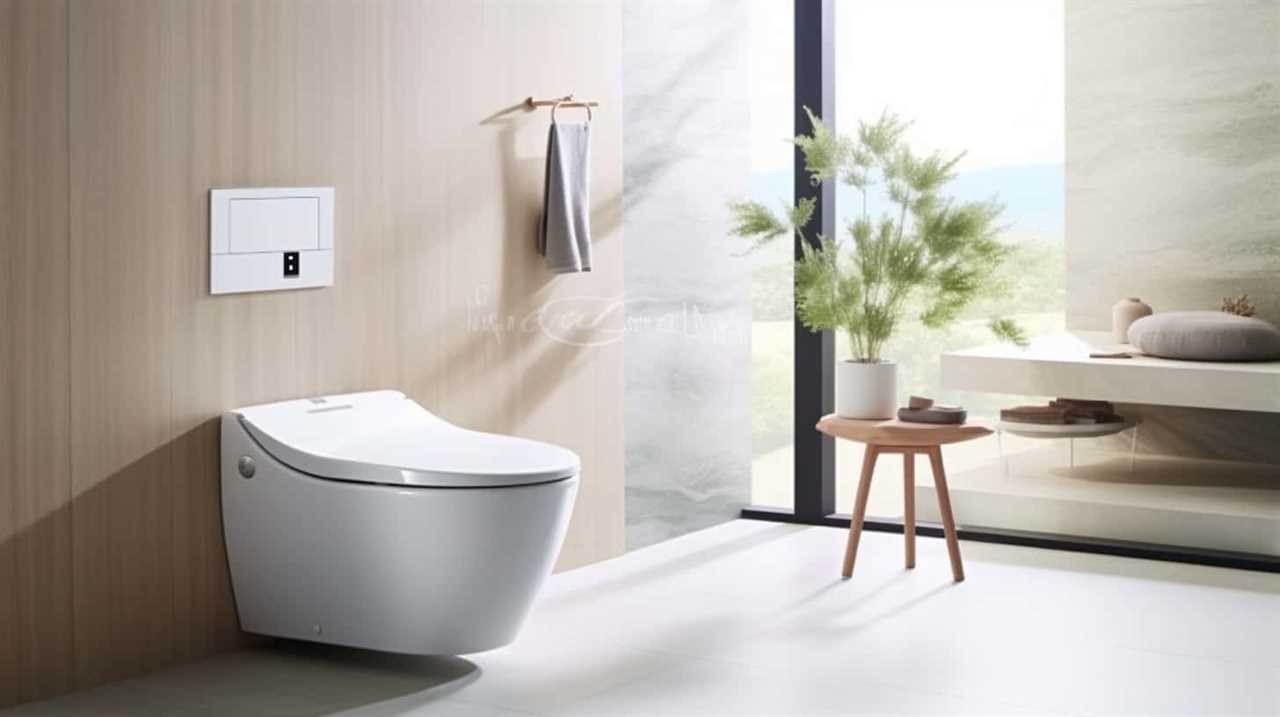
Secondly, dish soap acts as a lubricant, helping to loosen and dislodge any stubborn debris. Its powerful cleaning properties also help to eliminate foul odors.
To use this method, simply mix a generous amount of dish soap with hot water and pour it down the drain. Allow it to sit for a few minutes before flushing with more hot water.
This technique isn’t only effective but also cost-efficient, making it a popular choice among those seeking DIY solutions for drain cleaning.
Frequently Asked Questions
Is It Safe to Use Vinegar and Baking Soda to Clean My Toilet Drain if I Have a Septic System?
Using vinegar and baking soda to clean a toilet drain with a septic system may not be safe. Consider alternatives like enzyme-based cleaners or contact professional drain cleaning services for expert assistance.

Can a Plunger Be Used to Unclog a Toilet Drain if the Water Level Is Too High?
When the water level is too high in a toilet drain, a plunger may not be effective. Instead, consider using a drain snake as an alternative to unclog the drain.
How Does a Toilet Auger Work to Remove Clogs From a Toilet Drain?
Toilet auger operation involves inserting a flexible cable into the toilet drain and rotating it to dislodge clogs. The benefits of using a toilet auger include its effectiveness in removing stubborn blockages and its ability to reach deeper into the drain.
Can an Enzyme-Based Drain Cleaner Damage My Toilet Bowl or Pipes?
Enzyme-based drain cleaners have the potential to damage toilet bowls and pipes. It is important to follow the instructions carefully and avoid using excessive amounts to minimize the risk of harm.
Is It Necessary to Use Hot Water and Dish Soap Regularly to Prevent Clogs in a Toilet Drain?
To prevent clogs in a toilet drain, it is not necessary to use hot water and dish soap regularly. There are alternative methods such as using natural drain cleaners that can effectively keep your toilet drain clean.

Conclusion
So, in conclusion, when it comes to cleaning your toilet drain, there are several effective options to choose from.
Whether you opt for the powerful combination of vinegar and baking soda, the force of a plunger, the precision of a toilet auger, the natural enzymes in a drain cleaner, or the simplicity of hot water and dish soap, you can keep your toilet drain clean and clog-free.
Don’t let a dirty drain dampen your day – try these techniques today!
